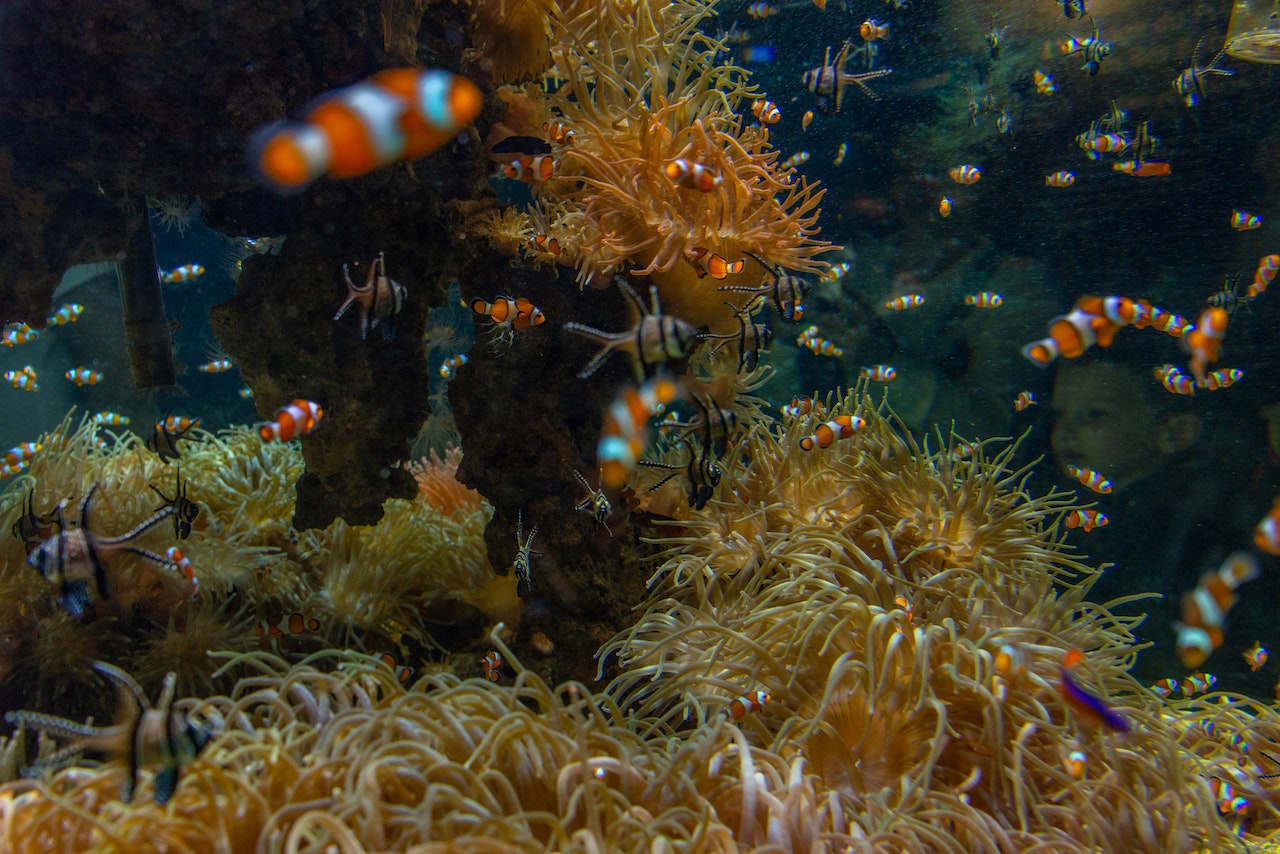Water Acclimation
Acclimating New Saltwater Fish
Here are some easy acclimation procedures for newly arrived saltwater fish. To reduce any additional stress on your saltwater fish you should turn off all the lights on the tank before introducing the new fish. The following quick steps need to be followed and completed within one hour of delivery..
1. Float the unopened bag in the display or quarantine tank for fifteen minutes to equalize the water temperature in the shipping bag.
2. Open the bag by cutting it just below the metal staple and add one cup of aquarium water into the shipping bag.
3. Wait five minutes before you add another cup of aquarium water. Repeat these steps every five minutes until the shipping bag in filled.
4. Remove half of the water in the shipping bag into a waste container. Add another cup of aquarium water and wait five minutes before you add another cup.
5. When the shipping bag becomes filled the second time, you can then safely net the fish and place it into your tank.
6. Discard both the shipping water and the water in the waste container.
7. Leave the fish with the lights off for the rest of the day to allow it to settle into its new environment.
Acclimating New Clams or Corals
To reduce any additional stress on your newly arrived clams, invertebrates and live corals you should turn off all the lights on the tank so animals can slowly acclimate to your lighting environment. Light acclimation is a very important part of acclimating any new coral or clam. We recommend that you place the coral or clam in the bottom part of the tank (be careful that the new invert. doesn't become covered with sand) and over the next two weeks slowly acclimate it to your lighting by gradually moving the animal into its final position in the aquarium. You can follow the same acclimation procedures above or use the following drip method. Some corals may slime during shipping which is natural part of there reaction to shipping or acclimation. The following easy steps need to be followed and completed within one hour.
1. Float the unopened bag in the display or quarantine tank for a fifteen minutes to equalize the water temperature in the shipping bag.
2. Open the bag by cutting a small hole in it just below the metal staple.
3. Take an airline hose and attach a airline control valve at one end. Place the other end in the display or quarantine tank and adjust the valve so you get one drop per three seconds.
4. When the bag is filled you should close the valve, remove the hose from the shipping container and discard half of the water in a waste container.
5. Place the airline hose back in the bag and continue to drip the aquarium water into the bag.
6. When the bag is filled you can then discard both the shipping water and the water in the waste container.
7. Place the coral in the lower part of the tank and leave the lights off for at least three hours.
Algae Control
What are ways to control the growth of nuisance algae? -Keep your aquarium at a cool temperature between 76°-77° Light-cycle should not exceed 9 hours of daylight or 12 hours of actinic lighting. Phosphates in the water you use for topping off your aquarium, or for mixing new saltwater can cause algae blooms. - The most effective way to eliminate phosphates is to use a reverse osmosis (RO) water filter to remove phosphates and other pollutants from your water supply. -You can also use a phosphate sponge, a type of filter media, to help absorbphosphates out of the aquarium water. Add an ultraviolet (UV) sterilizer to your aquarium system. Add a clean-up crew to establish a natural balance. - A small army of snails, hermit crabs, emerald crabs, sally lightfoot crabs, blennies, tangs, and sand sifting gobies will keep your aquarium looking its best, and save you work. See our Clean-up Crew Packages under Coral & Invertebrates.

